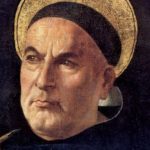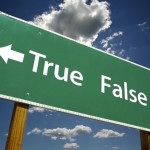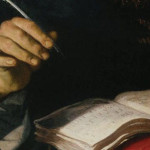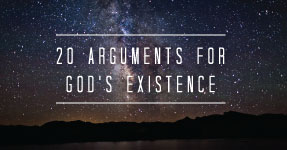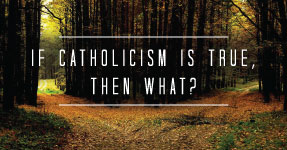Come, Let Us Do Science Together
by Dr. Stacy Trasancos
Filed under Christianity and Science
An atheist invites a Catholic over for dinner. The atheist host graciously plans to serve pan fried sea bass with a sauce made of black pepper, vermouth, fresh thyme, saffron, and a delicate touch of cream for good measure. She selects some greens and tomatoes for the side. On the way over, the Catholic picks a H.R.M. Rex Goliath Free Range Red, the bomb of all wines even with bass, 2 bottles also for good measure, and grabs a bag of Lindt dark chocolate bars for dessert.
The two women prepare their meal with excitement. The Catholic recommends slightly lowering the skillet temperature after adding the thick fish, so it roasts as it sears. The atheist gives it a try and acquires a nuance in her cooking skills. The atheist recommends a vinaigrette for the greens, honey and cayenne, something bold to marry the subtle entrée with the wine. The Catholic never thought of such a combination, but discovers that it works well. They synthesize the meal, set the table, and enjoy the fruits of their labor. It is a good evening, occurring within the greater context of each woman's life.
It's no different, really, in a laboratory. Two people can work together to achieve a mutual goal, and enjoy it despite differences beyond the immediate environment. Science, like cooking, occurs in a greater context of life. I think that point gets lost in the science vs. religion debates because there's some assumption that people of faith must set it aside to do science. It's exasperated by this new age idea that the only real kind of knowledge we can have is scientific knowledge, this belief that science can solve all of the tasks we face. I'd like to address these concerns from my perspective as a former research chemist in both academic and industrial settings. I was non-religious at the time. I had no convictions either way.
I worked alongside declared atheists, practicing Buddhists, faithful Muslims, evangelical Christians, and devout Catholics. In the decade I worked, I interacted with researchers from South Korea, China, Japan, Singapore, Hong Kong, Germany, Switzerland, France, Russia, England, Canada, Mexico, and Brazil. Science is a global enterprise, but scientific work is specialized. Therefore, people don't stand around arguing over religion before they design and run experiments, collect and communicate data. No one was expected to hide his or her faith as such a demand would have been childish and inhospitable, rudely narrow-minded.
Sure, over beer and chicken wings after work on Friday, during a cook-out at the boss's house in July, or while dining on a patio in Lyon, researchers had lively arguments on such topics beyond science, but it didn't interfere with our scientific work. Scientists are naturally interested in their peers because they are curious and open-minded, and routinely work in diverse teams united toward a common goal.
As a Catholic and full-time homemaker now, I study theology. I spend a lot of time trying to make sense of this science-religion Venn Diagram because it was not something I ever considered as a scientist. I've read Stephen J. Gould's generally accepted Non-Overlapping Magisteria (NOMA) concept that holds theology and science as two separate spheres of teaching authority occasionally bumping into each other. NOMA doesn't seem accurate though, it seems like a mis-characterization, a veiled attempt to convince Catholics to check their faith at the door, which makes about as much sense as asking your dinner host to believe the kitchen is the only room in her house, or expecting your dinner guest to believe cooking is all there is to living. I don't buy it. The people I worked with were not that controlling or unreasonable.
NOMA just doesn't jive with my experience, and my doctoral research certainly begged the question of God's existence. I worked, in part, on simulating photosynthesis, and it was a given that we had to study the design in nature to design our experiments in the lab. Whether a person believed in God or not, she could still aim a Nd:YAG laser the size of artillery, generating 532 nanometer wavelength light (the sun) at a cubic millimeter quartz cuvette containing monodisperse 35 nanometer silica spheres (that she made) layered with photoreactive polymers (the leaves), and see what happened. No one demanded or forbade I profess faith in an intelligent designer, though that research played a role in my later conversion. I have poignant memories of hurling the cuvette in the trash can, gripping the windowsill next to my desk, and staring at the dogwood trees below wondering how they could possess such secrets and appear so care-free.
The NOMA diagram is not, I argue, consistent with Catholic thought either. St. Thomas Aquinas describes a hierarchy of the sciences, the highest science is the study of sacred doctrine (theology) because its object is God, and the other sciences ordered below it from the abstract and speculative to the observable and tangible. All of the sciences are an integrated search for truth, which is ultimately a search for God because God is the author of truth. No science, whether speculative or practical, occupies a conceptual sphere outside the realm of truth. Theology and science as two equal bubbles bumping around in the space of human knowledge just doesn't fit.
Catholics do everything in the context of their faith. Science, for a Catholic, is understood within the context of the theology of creation, the study of the created world, part of a greater truth. Atheists or people of other religions can operate inside that same circle of scientific truth, just as two people can cook together in a kitchen, because the material world appears to all of us as a common experience. A Catholic operating within the context of the Catholic faith keeps the dignity of the human person and the custodial responsibility as a steward of nature before her at all times. She has every motivation to seek the truth, whatever it demands -- noble goals for anyone.
This isn't to say that the NOMA diagram doesn't represent any reality. Some people do view the relationship of science and theology in this way, especially for certain hard questions regarding our moral conduct, our origins, and our place in the universe. At some point the research is not just like cooking in the kitchen because there are conflicts about which materials are ethical to use and conflicts about how to interpret the data based on one's worldview.
For instance, a non-Catholic may expect a Catholic to do research on human embryos or fetuses on grounds of subjective moral reasoning in opposition to Catholic teaching. The non-Catholic may expect the Catholic to separate her faith from her science, true to the NOMA diagram. But to the Catholic, that request would be as absurd and tyrannical as asking her to chop up children in her kitchen and cook them just because a non-Catholic thinks it's moral. We are not going to progress in knowledge by imposing injustice.
Or a non-Catholic may expect a Catholic to superimpose materialistic beliefs on evolutionary biology or neuroscience data, to deny that humans have souls, but a Catholic cannot do that. Would an atheist appreciate being told he must interpret data in the light of faith? Surely not. The NOMA diagram encourages division, and such behavior will not further our collective knowledge, which is why I argue that the harder questions don't support the NOMA diagram, not for Catholics, not for people of other faiths, not for atheists. Rather, they highlight why it is insufficient.
What the NOMA diagram reflects is our incomplete knowledge. For if we had complete knowledge the spheres would merge into one, all our knowledge coming together toward ultimate answers. As the pagan philosopher, Mortimer J. Adler, so beautifully expressed: “Ultimately there can be no disagreement between history, science, philosophy, and theology. Where there is disagreement, there is either ignorance or error.” In fact, Gould admitted mid-way through his NOMA essay that there is some "interdigitating in wondrously complex ways along [science and religion's] joint border" and by the end he even softened his definition by conceding that NOMA "enjoins...the prospect of respectful discourse, of constant input from both magisteria toward the common goal of wisdom."
Yes, that's more like it. Cross the barriers, dialogue, and strive for unity, an idea as deeply human as sharing meals. Just as cooking a culinary masterpiece is a celebration of our skills in manipulating natural resources for the common good, so too is science a celebration of our shared humanity, but on a larger scale. Nonetheless, I don't think it's impossible to gather round that table.
(Image credit: Wine Palate)
Related Posts
Note: Our goal is to cultivate serious and respectful dialogue. While it's OK to disagree—even encouraged!—any snarky, offensive, or off-topic comments will be deleted. Before commenting please read the Commenting Rules and Tips. If you're having trouble commenting, read the Commenting Instructions.





